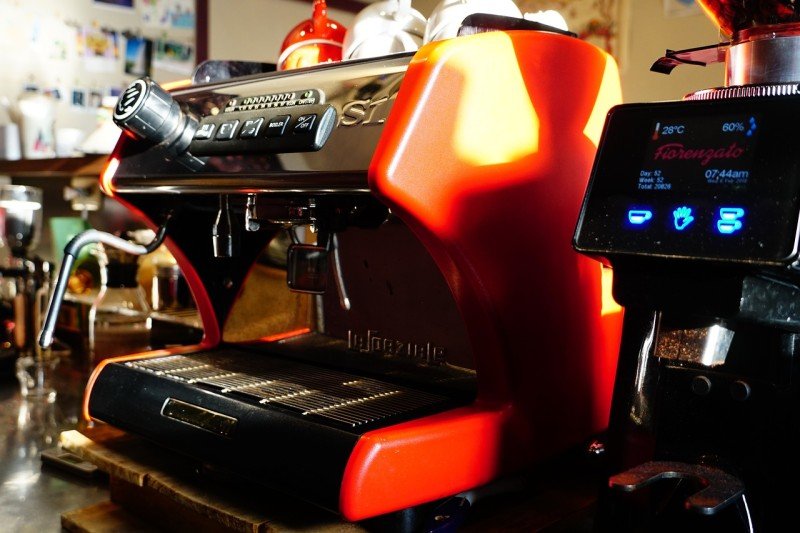Espresso, the intense and beloved fuel of coffee aficionados around the world, has a rich and fascinating history. Its journey begins in the misty hillsides of Ethiopia, where coffee was first discovered in the 9th century. According to one legendary tale, a goat herder named Kaldi noticed his goats became unusually energetic after grazing on certain berries. Intrigued, he tried the berries himself and experienced the stimulating effects. This discovery marked the birth of coffee and set off a chain of events that would lead to the creation of espresso.
Fast forward several centuries to the bustling coffee houses of 16th-century Italy. These vibrant establishments, known as "penny universities," played a pivotal role in the development of coffee culture and the birth of espresso. The popularity of coffee quickly spread from Ethiopia to the Middle East and eventually reached Europe. In Italy, coffee became a social, intellectual, and cultural phenomenon. Coffee houses provided a space for lively discussions, stimulating debates, and the exchange of ideas, fueling the Renaissance spirit.
However, it wasn't until the early 20th century that the modern espresso we know today was born. In 1901, Luigi Bezzera, an Italian inventor, created the first espresso machine. His innovative machine used steam pressure to force hot water through finely ground coffee, producing a concentrated and richly flavored beverage in a matter of seconds. This breakthrough allowed for the mass production of espresso and revolutionized the way coffee was prepared and enjoyed. From humble beginnings in Ethiopia to the intricate rituals of Italian coffee culture, espresso has truly come a long way.
The intriguing journey of the coffee bean
Coffee is one of the most beloved beverages worldwide, with espresso being a particular favorite among caffeine enthusiasts. But have you ever wondered about the exciting origins of espresso and the journey of the humble coffee bean? Let's delve into the fascinating history that led to the creation of this iconic drink.
Our story begins in the highlands of Ethiopia, where the coffee plant, Coffea arabica, first originated. The indigenous people of these lands discovered the invigorating effects of consuming coffee beans, often grinding and mixing them with fats to create energy-boosting balls. As trade routes expanded, coffee beans and the subsequent drink made their way to the Arabian Peninsula, where the beverage gained popularity.
The true advent of espresso, however, can be traced back to the vibrant and bustling streets of 19th-century Italy. Italians have always had a deep appreciation for coffee and sought to make the brewing process faster and more efficient. This quest led to the development of the espresso machine, which utilized steam pressure to force hot water through finely ground coffee, resulting in a rich and concentrated shot of coffee. This innovation forever changed the way coffee was enjoyed, introducing the world to the intense flavors and delightful aromas of espresso.
Discovering the bold flavors of northern Italy
Italy is a country renowned for its culinary delights, and the northern region is particularly famous for its bold and flavorful dishes. Northern Italy is home to a plethora of dishes that showcase the region's adventurous and diverse flavor profiles. From rich and creamy risottos to hearty meat stews, the bold flavors of northern Italy are sure to tantalize your taste buds.
One of the most iconic beverages that originated in northern Italy is espresso. This strong and aromatic coffee has become a staple in coffee shops around the world. The adventurous origins of espresso can be traced back to the early 20th century in Milan, where it was first created. Italians have mastered the art of espresso-making, ensuring that each cup is brewed to perfection, with just the right balance of bitterness and richness.
When it comes to food, the northern region of Italy is famous for its rich and indulgent dishes. From the creamy and buttery risotto alla Milanese to the hearty and flavorful bollito misto, the cuisine of northern Italy is sure to satisfy any adventurous eater. The region is also known for its exceptional cheeses, such as the pungent gorgonzola and the creamy taleggio. These bold flavors are often paired with the region's famous wines, such as Barolo and Amarone, creating a truly unforgettable dining experience.
Revolutionizing coffee: The birth of espresso
In the world of coffee, the birth of espresso marked a turning point that revolutionized the way people enjoyed their favorite caffeinated beverage. Espresso, a strong and concentrated form of coffee, has a rich and adventurous history that is worth exploring. This article aims to unveil the origins of espresso and shed light on the factors that contributed to its rise as an iconic brewing method.
The story begins in Italy during the late 19th century, a time when coffee was typically prepared using methods such as boiling or percolating. However, a new and exciting innovation emerged out of the desire to make coffee faster and with more intensity. Espresso was born as a result of ingenious engineering and craftsmanship. The first espresso machine, known as the “Fast Coffee Machine,” was invented by Angelo Moriondo, an Italian engineer, in 1884. It provided a way to brew coffee quickly by forcing steam and water through finely ground coffee beans, producing a small, concentrated shot of coffee.
Despite the invention of the espresso machine, it took some time for the culture of espresso to develop and gain popularity. Italian cafes played a significant role in the dissemination of this brewing technique. These cafes became social and cultural hubs, where people gathered to enjoy a cup of espresso and engage in lively conversations. As the word spread, the demand for espresso machines surged, leading to further refinements in their design and functionality. This paved the way for the golden age of espresso, when renowned espresso machine manufacturers like La Pavoni and Gaggia emerged.
Today, espresso is not only a beloved brewing method in Italy but has also become deeply ingrained in global coffee culture. Its strong and bold flavor, exquisite crema, and versatility have captivated coffee enthusiasts worldwide. Whether enjoyed as a standalone shot, blended with milk to create popular espresso-based beverages like cappuccinos and lattes, or infused into delicious desserts, the influence of espresso in the culinary world is undeniable. As the birth of espresso continues to shape our coffee experiences, it is remarkable to think about the adventurous journey that led to its creation and the lasting impact it has made on how we enjoy coffee today.



